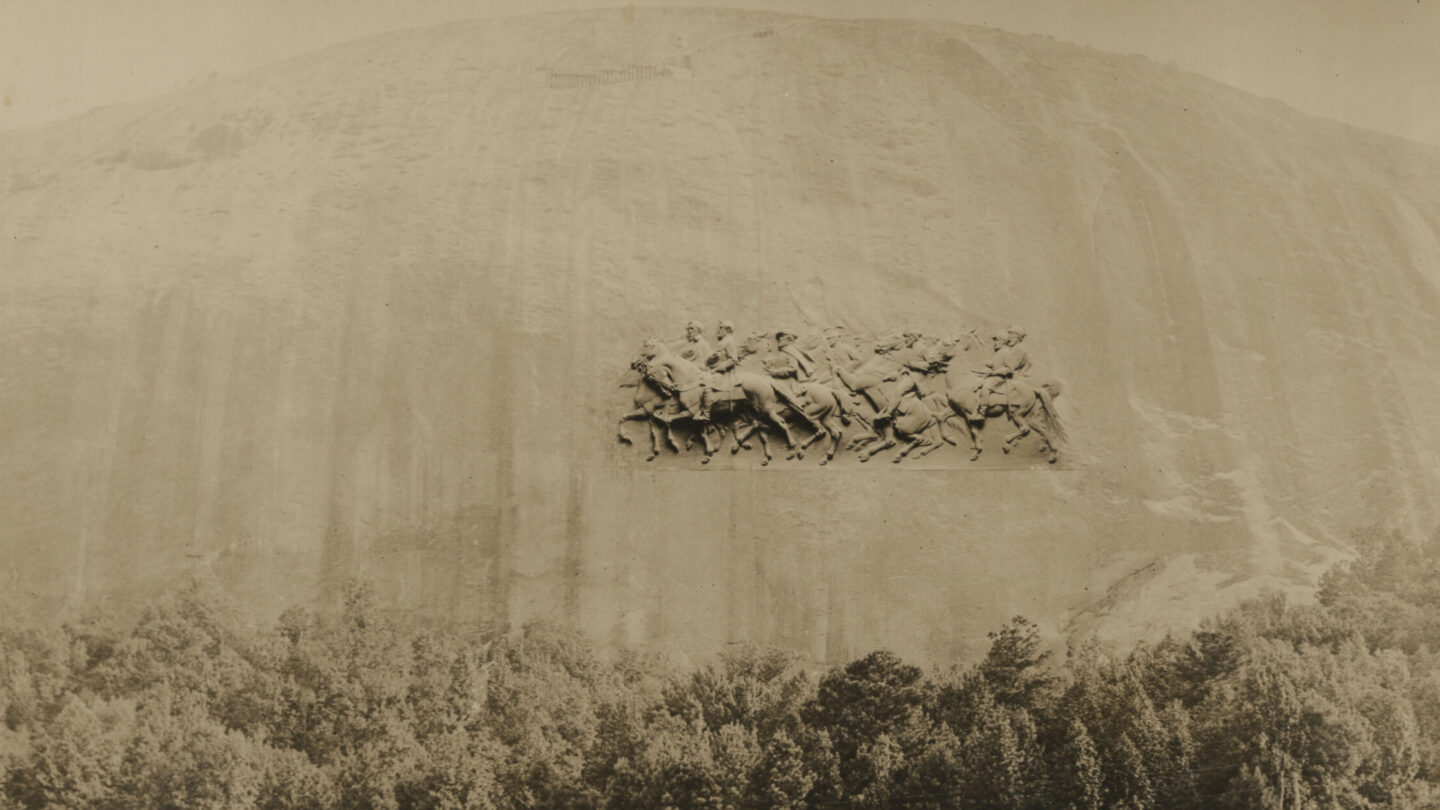
Augustus Lukeman’s proposed model projected onto Stone Mountain, 1925
How was it created?
Being a popular picnic spot in the early 1900s, Stone Mountain seemed a natural location for a memorial to the Confederate States. Helen Plane, a Civil War widow, advocated for the creation of this monument. After some planning, Plane and the Stone Mountain Confederate Memorial Association (SMCMA) began the project in 1923. It would take close to fifty years to complete!
Sculptors Gutzon Borglum and Augustus Lukeman were the first artists hired to work on the memorial of Confederate soldiers and generals. After a few years of working, Borglum was fired by the SMCMA and moved on to another project: Mount Rushmore. After reviewing Borglum’s work, Lukeman wanted to decrease the monument’s size. By 1928, the SMCMA ran out of funds. The Great Depression in the 1930s made additional fundraising impossible.
Though Stone Mountain remained untouched for many years, the project was continued in 1964 by a sculptor named Walter Hancock. Chief carver Roy Faulkner used thermo-jet torches to chip away at the granite of the mountain. For years, Faulkner worked to complete the profiles of Jefferson Davis, Robert. E. Lee, and Thomas “Stonewall” Jackson. Finally, on May 9, 1970, an unveiling ceremony was held for the carving. With pride, Faulkner revealed the country’s largest Confederate monument: a sculpture larger than two football fields! Finishing touches were completed in 1972.
The Civil Rights Movement and Resistance to the Stone Mountain Monument
Though impressive in size, the history of this monument is complicated. Although the Stone Mountain sculpture displays figures from the American Civil War, its creation was heavily influenced by the events of the Civil Rights Movement, a time when Black Americans demanded equality with White Americans.
Since the late 1800s, schools practiced “separate but equal” education, which was the idea that students of the same race should only go to school with each other. This practice, called segregation, helped to maintain and justify a feeling of superiority amongst white people. In 1954, the U.S. Supreme Court case Brown v. Board of Education decided that it was unconstitutional for schools to be separated by race. In other words, the Court found that segregation was inherently unfair and unequal, and that Americans of all backgrounds – regardless of race or nationality—should be able to attend school together.
Even though integration was mandated by the U.S. government, some states, including Georgia, refused to do so. Did you know that instead of integrating schools, Georgia’s governor Herman Talmadge attempted to close all public schools to keep races separated? Georgia’s public school system was almost completely shut down!
In 1958, the state of Georgia purchased Stone Mountain and resumed carving in the midst of the Civil Rights Movement. In protest of the 1954 Brown V. Board of Education ruling, many white Georgians pushed for the completion of Stone Mountain’s Confederate monument. They felt that the new monument represented state rights and resistance to desegregation and racial equality mandated by the U.S. government. Many other Georgians, White and Black, protested against the monument because they felt it honored Confederate leaders who fought a war to preserve the inhumane and immoral practice of enslavement. How do you imagine this monument makes people feel when they come to visit the park? How do you think descendants of enslaved people feel about it?
- https://stonemountainpark.com/activity/history-nature/memorial-carving/
- https://www.atlantahistorycenter.com/blog/stone-mountain-a-brief-history/
- https://www.atlantahistorycenter.com/monument/
- https://calendar.eji.org/racial-injustice/dec/18#:~:text=On%20December%2018%2C%201952%2C%20anticipating,the%20state%20rather%20than%20integrate.